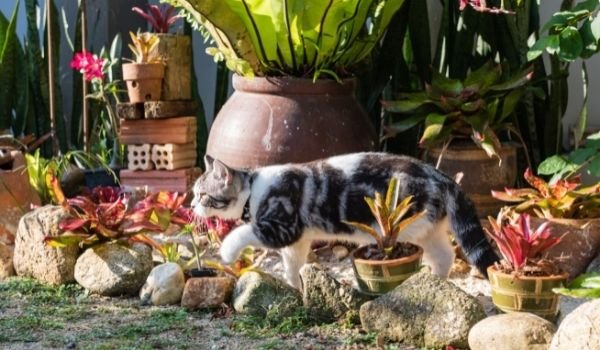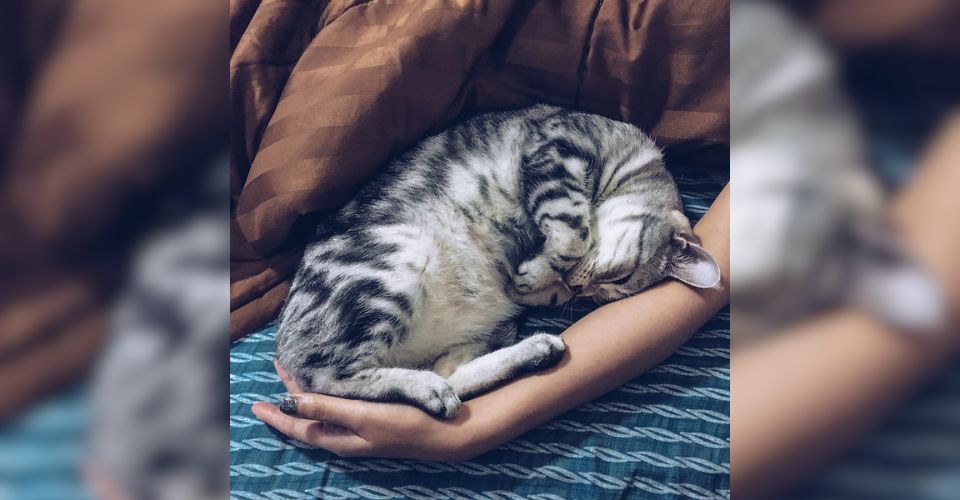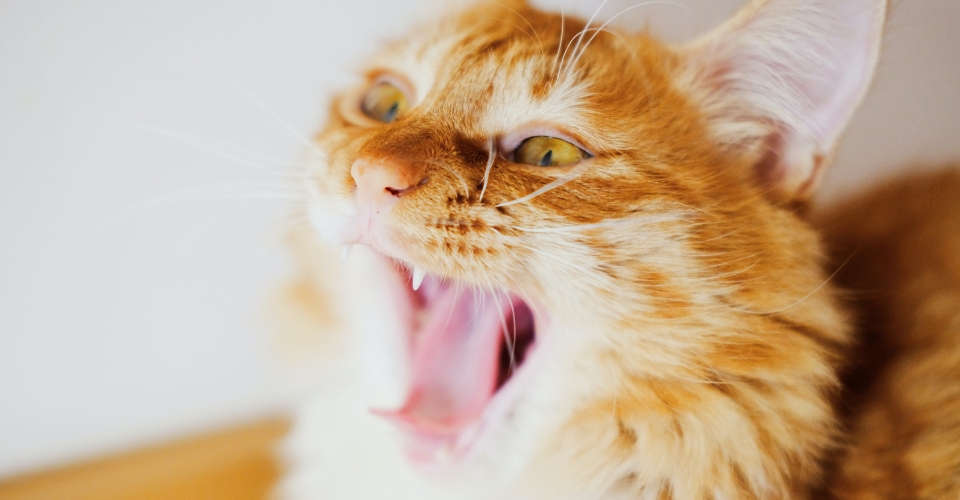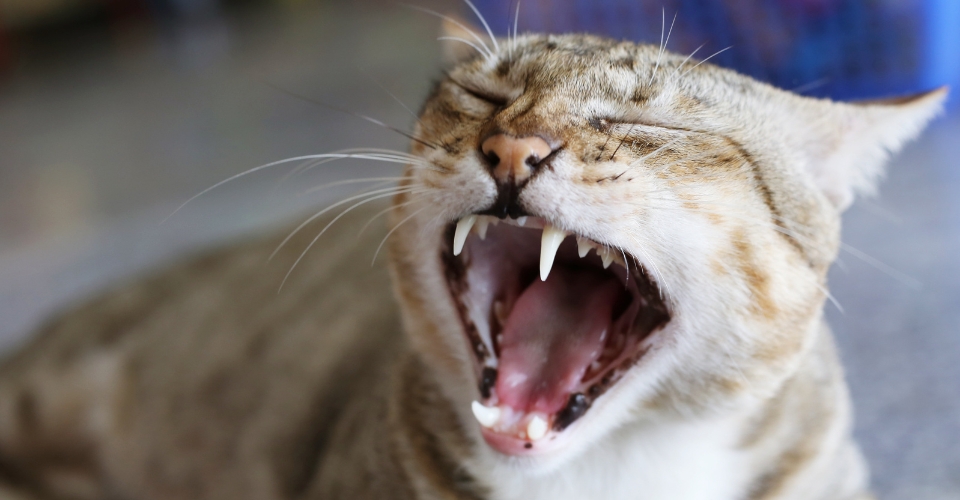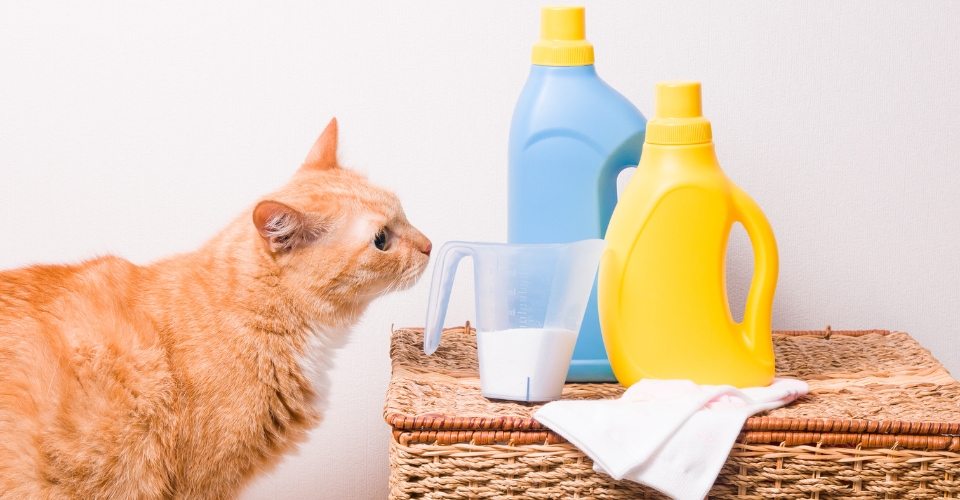Kittens grow quickly. Before you know it, your baby kitten, with eyes shut and ears folded, has reached puberty. Keeping track of their growth is hard without maintaining a kitten growth chart. The growth chart would help you identify, with certainty, when your cat is likely to enter her first heat cycle.
Has your kitten already gone into her first heat? This might have gotten you pondering, how long does a cat stay in heat?
The short answer is: On average, a cat stays in heat for six days. But this may not always be the case. Some may stay a little longer, some for shorter periods.
We will discuss this and similar questions in the lines below. For instance, if your cat has not reached puberty yet, you might also be curious to know when a cat enters her first heat. How often does a cat go into heat? And how can you prevent your cat from going into heat? Should you even consider preventing heat in your cat?
When Do Cats Have Their First Heat?
Cats go into their first heat cycle when they reach puberty.
On average, kittens mature at about 6 months of age. However, some kittens may hit puberty as early as four months, yet others may take up to a year or even longer.
Cats are seasonally polyestrous, meaning that unspayed female cats, also known as queens, have multiple heat cycles during the mating season until they mate and get pregnant.
Stages of a Cat Heat Cycle
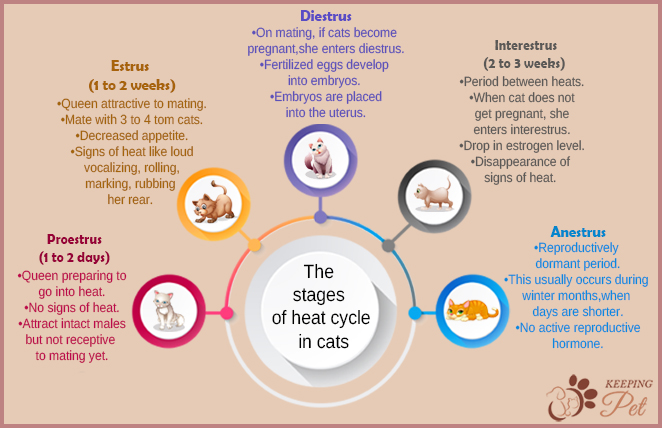
The estrous cycle in cats consists of five stages.
| Proestrus (1 to 2 days) | Queen preparing to go into heat No signs of heat Attract intact males but not receptive to mating yet |
| Estrus (1 to 2 weeks) | Queen attractive to mating Mate with 3 to 4 tom cats Decreased appetite Signs of heat like loud vocalizing, rolling, marking, rubbing her rear |
| Diestrus | On mating, if cats become pregnant, she enters diestrus Fertilized eggs develop into embryos Embryos are placed into the uterus |
| Interestrus (2 to 3 weeks) | Period between heats When a cat does not get pregnant, she enters the interestrus cycle Drop in estrogen level Disappearance of signs of heat |
| Anestrus | Reproductively dormant period No active reproductive hormone This usually occurs during the winter months, when days are shorter |
Proestrus (1 to 2 Days)
At this stage, your cat is preparing to come into the heat, but she is not there yet. This is the reason that your cat may attract unneutered male cats but would still not be receptive to mating. This stage would only last from one to two days. During this stage of the estrous cycle, the cat will show no signs of heat.
Estrus ( 1 to 2 Weeks)
This is the stage when your cat is truly in heat. She will not only attract unneutered male cats but will also be receptive to mating. Cats are induced ovulators, meaning that they will only start ovulating after mating. Mating results in the release of hormones that induce ovulation.
Some queens may not begin ovulating unless they have mated three to four times within 24 hours. A queen may mate with multiple tomcats and give birth to a litter of kittens of different fathers.
Many behavioral changes, such as vocalizing loudly, yowling, rolling around, marking vertical objects, raising her rear, and rubbing against the owner (or other things), indicate that the cat is in heat.
Diestrus
If the queen mates during estrus and successfully get pregnant, she will enter diestrus. During this phase, the level of progesterone in serum rises significantly and remains high throughout the gestation period. The fertilized eggs will develop into embryos and are implanted in the uterus around 12 to 14 days after mating. Note that not all embryos are successfully implanted in the uterus.
Interestrus (1 to 3 Weeks)
Interestrus is the period between heats. Queens who do not mate or become pregnant (no ovulation occurs) during the estrus stage will go into interestrus. During this phase, the queen’s estrogen level drops, but there are no specific outward signs other than the disappearance of the signs of heat.
On average, the interestrus period lasts seven days, but it can be as short as two days and as long as 19 days. After the end of this period, the cat will again go into the proestrus phase, which will lead to estrus. Your cat will continue to experience heat cycles every 2 to 3 weeks until she is spayed or gets pregnant.
Anestrus
During this period, queens are reproductively dormant. There is no heat cycle activity, and none of the reproductive hormones is active. This usually occurs during the winter months. In the United States, the anestrus period would be between September and January. This is because cats need longer daylight exposure for their reproductive hormones to kick in.
Feral and stray cats’ mating season is from spring to fall when days are longer and they have ample time to bask in the sunlight. Domestic indoor cats are more exposed to artificial lights—and yes, artificial lights work too—one can expect them to have heat cycles throughout the year.
How Can You Tell If Your Cat Is In Heat?
Unlike dogs, cats do not show obvious signs when they are in heat. However, if you observe your cat closely and know what signs to look out for, you will be able to tell if your cat is on heat or not.
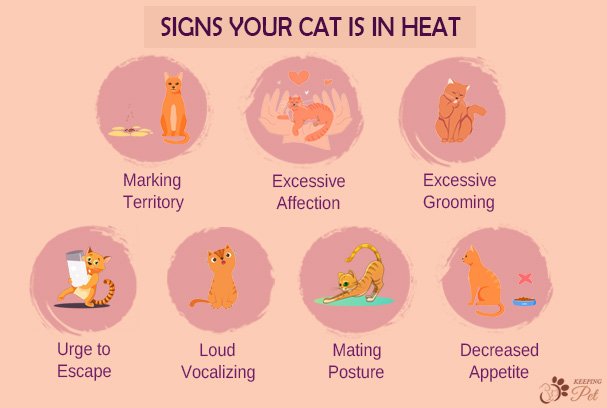
- Excessive Affection: When in heat, your cat would become overly affectionate. She will be rubbing her hindquarters against furniture, walls, your legs, etc. Your cat might also like to sleep between your legs or on top of you.
- Excessive Grooming: Cats are fastidious creatures, but when in heat, you may observe your cat licking her genital area excessively. Keep in mind that this could also be a sign of urinary tract infection. So, if your cat is only exhibiting this behavior and not showing other signs of heat, you should take your cat to a veterinarian.
- Mating Posture: When a cat is in heat, looking for a tomcat to copulate with, she will often assume the estrus posture (also called lordosis): head down, forelegs half bent, rear end raised, tail raised and pushed aside, exposing the perineum (area between thigs containing genitals). A cat in heat may also knead or make biscuits with her front legs; it may look as if she is rhythmically walking in the same place. If you pet your cat and she assumes this estrus posture, she is surely in heat.
- Marking Territory: A cat in heat will be marking vertical objects with its urine. Cats have an amazing sense of smell, so by marking, cats in heat are trying to attract potential mating partners—unspayed tomcats. This could also be a sign of distress in cats. Regardless of the reason, you might be worried about cat pee in your house. Check out: How to Get Rid of Cat Pee Smell?
- Loud Vocalizing: Cats in heat vocalize loudly to call tomcats in the neighborhood. This mating call could go on for a couple of days until your cat mates and get pregnant. The loud vocalizations include meowing, crying, and yowling.
- Urge to Escape: When a cat in heat fails to attract an intact male cat with all the loud vocalizing and spraying, she would try to escape to find a potential suitor(s) outside. Every time you open the door, she will pounce at it. Cats often run out and disappear for a day or even a week when they are on heat. So, make sure that every escape route is sealed for your cat.
- Decreased Appetite: A cat in heat will exhibit a significant decrease in appetite. The hormonal changes make the cat give priority to her reproducing needs over nutrition.
Do Male Cats Go in Heat?
Your male cat acting crazy and losing his cool might get you wondering if your tomcat is in heat. No, Mr. Fluffy acting like an insatiable maniac, is not in heat. Male cats do not go into heat; only female cats do. Male cats can mate all year round. They only act crazy, like they are in heat, when they smell a nearby cat in heat.
Why You Should Prevent Your Cat From Going Into Heat?
Cat in heat can be difficult to deal with—for you as well as your cat. If you have ever been awakened from a deep sleep due to your cat’s loud yowling, you will have an idea of how disquieting it can be for cat owners. Although cat yowling does not mean that your cat is in pain, we may construe it as if she is in pain.
While you may not find your cat’s yowling much disturbing, your neighbors might. In addition to giving your neighbors a chance to complain, a cat in heat would also try to escape in search of a mating partner. And if she fails to mate, she will continue to go into a heat cycle every other week until she gets pregnant or spayed.
This is the reason that most cat owners spay their cats before they go into their first heat. Spaying puts an end to the heat cycles in cats and stops the nighttime yowling with it. Spaying also has many health benefits, such as a decreased risk of cancer and infections and improved life expectancy.
If you have not spayed your cat, her nighttime yowling during cat mating season will keep you up at night and make you wonder how long a cat stays in heat. So, if you are not planning on breeding your cat, you should get her spayed. This will help you avoid unwanted cat pregnancy, which often makes cat owners think about spaying their pregnant cats and aborting the pregnancy.
But until she is spayed, you have to give her extra care and attention to take her mind off mating. Be patient, and calm her with toys, music, games, etc.


